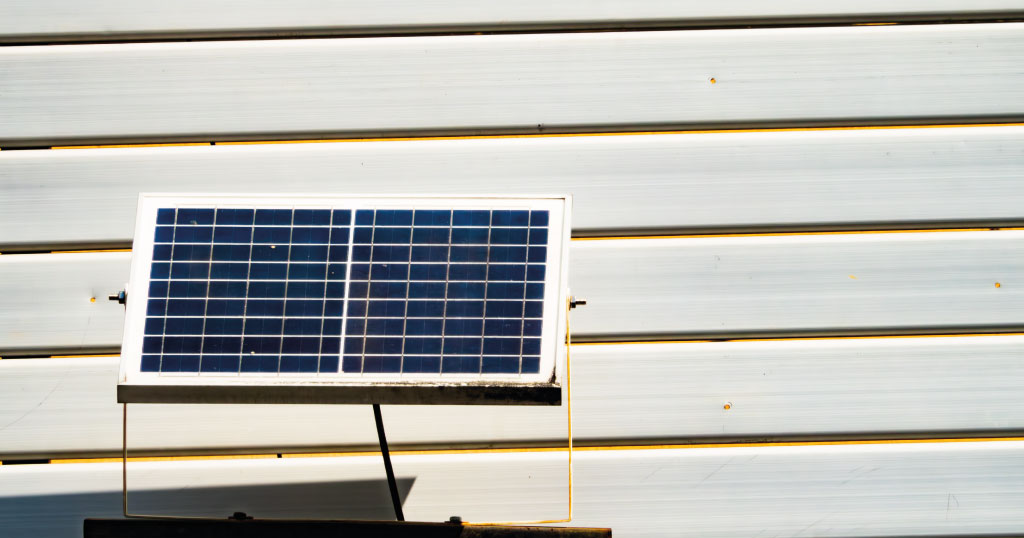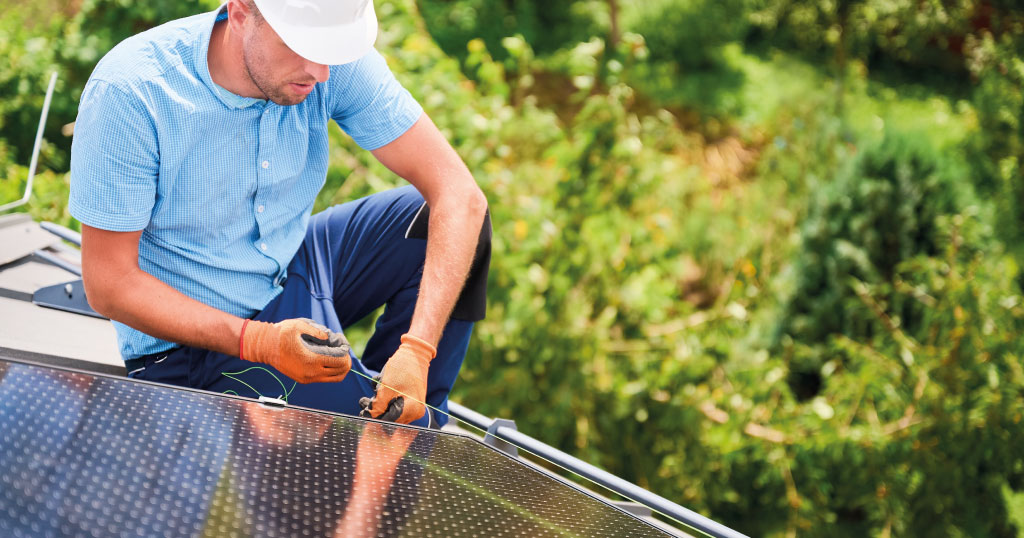What does the future of solar look like? Not just next year, or next decade— what about next century? Next millennia? Next myriad (that’s 10,000 years)?
But why bother thinking that far ahead? How can futurology— the science of trying to predict the future— help us in the present?
Let’s delve into the very real science of futurology and how “sun power” has inspired humanity since the dawn of time. In this blog, we’ll explore:
- The history of solar
- Solar power in space
- How solar power guides our search for extraterrestrial intelligence
- The near future of Solar
- And our predictions on solar
The History of Solar
As far back as 2,700 years ago, ancient people used magnifying glass to focus the sun and start fires.
2,300 years ago (3rd century BCE), the ancient Greek and Romans forged sheets of metal into concave pieces and polished them to a mirror finish. Some think these “burning mirrors” were used as a military weapon.
The story goes that Archimedes, the Greek mathematician, aimed several mirrors to burn the attacking Roman ships. While that is plausible, there’s basically no evidence supporting this story of Archimedes and the Siege of Syracuse. The Mythbusters TV series even recreated this story and declared it a myth!
Based on evidence from ancient societies across the globe, burning mirrors were most likely used to light torches, candles, and fires.
There is also evidence for solar-oriented architecture. The Anasazi people were ancient Native Americans known for carving their towns into the sides of cliffs. You can even see one at Mesa Verde National Park. But most of these structures were built facing the sun to keep them warm.
The Recent History of Solar

Skipping ahead a few thousand years lands us in the 18th century with the first solar oven. In 1767 a swiss scientist created a way to cook food with only daylight. It took him several tries, but eventually he constructed a box with three layers of glass. It could reach temperatures as high as 230 °F, which might not sound that impressive today. But remember, this was way before electricity.
Edmond Becquerel is largely credited with discovering the photovoltaic (PV) effect. In 1839, Becquerel discovered that certain materials (or semiconductors), when exposed to sunlight, could create an electrical current.
Later on in 1883, Charles Fritts built the first photovoltaic cell. It had less than 1% conversion efficiency and could barely produce a single watt. It could not compete with coal-fired power plants.
The last Century of solar.
PV cells didn’t become viable until 1954, when a group of scientists at Bell Labs created a silicon photovoltaic cell. Since then, we’ve only improved on their design.
But just 4 years after Bell Labs invented the modern PV cell, NASA sent solar to space. In 1958, NASA launched Vanguard 1, the first spacecraft to use solar cells. And solar has stayed in space. Even the International Space Station relies on its 8 solar arrays to provide 90 kilowatts every day.
Could we get electricity from Space?
The idea of transmitting power from space to earth has been around since the space race. In space, you don’t have to worry about cloudy days or bad weather. There’s no atmosphere to diminish the light. And there’s no night time so a solar satellite could produce power 24/7 365 days a year!
You could create a large array of solar panels that would operate at a higher efficiency than they would on earth.
But how would we get this power down to earth? We could beam it down in a laser made of microwaves. A retenna on the ground, a specialized antenna for receiving electromagnetic energy, could convert those microwaves back into electricity.
This wireless power transmission would still lose some power. Turning electricity into microwaves has a conversion efficiency of around 75%, so you would lose 25%. Then microwaves back into electricity is around 85% efficient. So you would lose an additional 15%.

This is an example of futurology. Futurology (sometimes called futurism) is a social science that you can study in college and get a degree in. It’s not about predicting the future and scoring who was right and who was wrong. It’s more about exploring the possibilities based on what we know now.
While solar power satellites are technically possible, we don’t have a reason to build them. Solar power is doing great down here on earth! As a solar company in Virginia Beach we see it first hand.
If you want electricity in space, your choices are either solar or a nuclear power system. Remember, ideas about the future reflect the time period they were made in. And this idea came from the space race, back when space exploration and colonization dominated science fiction.
Getting a satellite to low earth orbits costs millions of dollars. If launch costs were significantly cheaper then power satellites might be economical.
Maybe in a thousand years, if humanity has permanent settlements on the moon or mars or in colony satellites. In that future, there would presumably be space industries that made outer space more accessible, affordable, and understandable.
Let’s go to the far, far future! What’s the logical end point of solar power?
Global power consumption is rising at one of the fastest rates in recent history. In the 2010s, power demand across the globe rose at around 2.6% each year. But in 2024, it surged to 4.4%! As of 2025, our electricity demand is growing by 3.3%.
Currently, the world consumes 30,000 terawatter-hours per year. (That’s 30 billion megawatt-hours!) We can predict future global power consumption using the Compound Annual Growth Rate (CAGR) formula. We’ll spare you the math and just give you the answers.
If our electricity demands keep growing at 3.3% a year, then in 10 years our global consumption would be 40,000 TWh. And in 100 years? That’s 617,000 TWh!
So what’s the end point? What happens when our energy demands exceed what we can produce on Earth?
Physicist Freeman Dyson speculated that the logical conclusion of escalating energy needs would be to capture the entire energy output of a star. An energy hunger, spacefaring civilization would thus encompass their entire star in solar power satellites. This hypothetical megastructure is called a Dyson sphere or a Dyson swarm.
Wrapping a star in solar panels? That’s pretty hard to imagine.
Well, Dr. Freeman wasn’t suggesting we should go do that. He was suggesting that if we were looking for intelligent aliens we should search for infrared radiation. Converting the entire energy output of a star would result in a lot of waste heat, or infrared radiation.
In fact, SETI (the search for extraterrestrial intelligence) took this advice to heart. They started to look for stars surrounded by usual auras of infrared radiation. And they even found some stars that fit the description of a dyson swarm. But, we’re too far away and don’t have the technology to confirm.
For example, the Star KIC 8462852 was noted for giving off weird light fluctuations. It could be a dyson swarm, but more analysis showed that it was most likely just a stellar cloud of dust.

If you’re trying to predict which ideas will catch on in the future, think about accessibility, affordability, and understandability.
Let’s take cars for example. You might have learned that Henry Ford invented the first car, the Model T. In truth, there were several other types of cars before it, but they were not accessible or affordable to the average person. These early cars were more like luxury products for rich people.
But Ford Motors did popularize cars. The Model T came out in 1908 and was priced at $825. However, the cost dropped to $260 by 1924, thanks to mass production. Adjusting for inflation, it went from over $30,000 to under $5,000. So even the workers on the assembly line could afford one by saving for less than a year.
But what about understandability? Back in the 1950s, a car salesperson would teach you the basics, but you would have to learn how to drive by yourself. But this created a car culture where parents would teach their kids how to drive. And so cars became engrained in our modern world.
This principle also explains why flying cars haven’t taken off and might never. Flying cars are a staple of science fiction, but aviation is not accessible to the average person. There are small personal aircraft available right now. But they are extremely complex and expensive to maintain. And it is significantly more difficult to learn how to fly than it is to drive.
Right now, solar panels are becoming more accessible, affordable, and understandable.
What about the near future? What are our solar predictions as one of the best solar companies in Virginia (as recognized by Solar Power World)?
There’s a lot going on with solar right now. As we explored in Sunny Days Ahead for the Solar Industry, despite federal discouragement, solar is still the best option for many projects.
Solar panels are also becoming more accessible within the United States thanks to onshoring manufacturing. Check out our article, What’s happening in the solar industry? How domestic manufacturing is powering America’s future.
PV cell technology is most likely going to become more and more efficient over time. Read Are These Perovskite Solar Cells The Future of Residential Solar for an explanation of those innovations.
But what about your future? Are you going to go solar?
Going solar is an investment, one that needs to start with accurate information. So schedule a free site assessment to see what the future holds for you.
